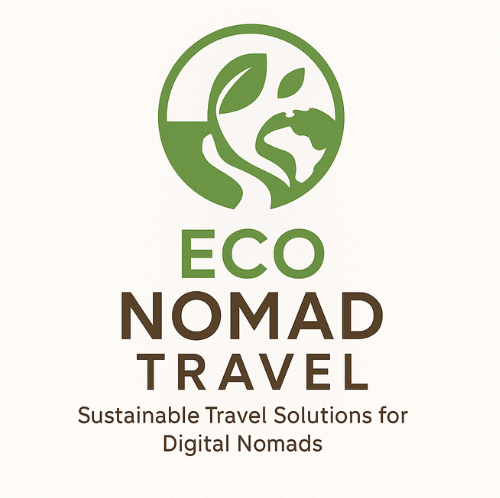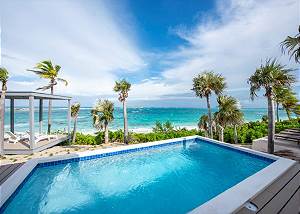
Eco-Luxury on a Budget: How to Find Green Stays Without the Greenwash (2025)
We decode certifications, show you how to audit a property’s claims in under 5 minutes, and share budget-friendly ways to sleep greener—without paying “eco tax.”
Disclosure: This guide includes affiliate links (flights, stays, eSIM, transfers). If you book via these, Eco Nomad Travel may earn a commission at no extra cost to you.
Published: • Updated:
Key takeaways
- Start with third-party certifications: prefer programs aligned with the Global Sustainable Tourism Council (GSTC) criteria. “Recognized” = the standard aligns; accreditation = the certification body itself is audited for rigor. :contentReference[oaicite:0]{index=0}
- Building standards matter for energy/water: LEED, BREEAM, and IFC EDGE signal design-level efficiency (not just towel cards). :contentReference[oaicite:1]{index=1}
- Greenwash filter: look for data (kWh/guest-night, liters/guest-night), scope-1/2 emissions, credible supplier policies, and public targets—not vague language.
- Location beats gadgets: walkable, transit-rich neighborhoods cut emissions and transport costs—a bigger win than “eco” amenities in car-dependent zones.
- Price ≠ sustainability: budget hostels and mid-range aparthotels can be more efficient than luxury villas, especially in compact, rail-served cities.
Related guides: eco tips · low-impact habits · carbon-neutral travel 2025
Certifications that matter (and how to check them)
Best first pass: search for certificates that are GSTC-recognized (the standard aligns with GSTC) or delivered by a body that’s accredited for auditing rigor. Think of it like “curriculum vs. exam proctor.” Recognized = good syllabus; accredited = verified proctor. :contentReference[oaicite:3]{index=3}
Hotel-facing certifications
- Green Key — global coverage with strict criteria; thousands of hotels certified. :contentReference[oaicite:4]{index=4}
- EU Ecolabel — strong in Europe; resource efficiency criteria for accommodations.
- EarthCheck — performance-based benchmarks (energy, water, waste).
- LEED / BREEAM / EDGE — building certifications signaling design/operational efficiency; great when paired with a tourism-specific label. :contentReference[oaicite:5]{index=5}
How to verify in 60 seconds
- Open the hotel’s site → sustainability page → look for the specific certificate name + year.
- Cross-check on the issuer’s directory (e.g., search property name on Green Key or EU Ecolabel lists). :contentReference[oaicite:6]{index=6}
- Scan for metrics: kWh/guest-night, liters/guest-night, diversion rate, renewable share.
- Confirm scope (whole building vs. spa only), validity dates, and audit cadence.
Heads-up: some platforms have retired proprietary “sustainable” badges and now surface third-party certifications to avoid confusion. :contentReference[oaicite:7]{index=7}
Water & energy policies (what to look for)
- Design-level efficiency: mentions of LEED/BREEAM/EDGE or heat-pump HVAC, variable-refrigerant flow (VRF), solar thermal for hot water, and heat-recovery ventilation. :contentReference[oaicite:8]{index=8}
- Numbers, not slogans: “20% year-over-year energy reduction” beats “we care for the planet.” Ask for kWh/guest-night or renewable % sourced.
- Low-flow + reuse: shower flow rates (<8–9 L/min), dual-flush WCs, graywater reuse, drought-adaptive landscaping.
- Linen policy with a logic: opt-in changes + on-site efficient laundry (or certified suppliers) with disclosed liters/kg.
Waste & refill systems (plastic-light wins)
- Bulk amenities: large-format dispensers (with tamper seals) replace single-use minis.
- Refill options: filtered water in common areas + in-room carafes; reuse bins for guests.
- Back-of-house separation: organics + recycling with local partners (not just a lobby bin).
- Supplier standards: housekeeping and laundry suppliers audited for chemicals and packaging reduction.
Pack smarter: eco-friendly travel kit 2025 · zero-waste packing
Walkability & transit score (carbon & cost)
Choose the neighborhood first, then the hotel. A central, transit-served base cuts rideshares, travel time, and budget. Look for metro/tram within 8–12 minutes on foot, grocery nearby, and bike lanes for short hops.
- Rail-rich Europe: Valencia, Porto, Zagreb, Tallinn, Athens (metro core), Budapest (M2/M4), Prague/Brno.
- Asia value: Penang, Kuala Lumpur (MRT/LRT), Fukuoka, Taipei, Da Nang/Hoi An (bikeable cores).
- Americas: Mexico City (Metro/BRT corridors), Medellín (Metro + Metrocable), San Juan (walkable core).
Low-impact mobility: see low-impact habits and night trains (Europe 2025).
Budget-friendly eco bases (2025 picks)
These cities combine walkability, transit, and a growing pool of certified or efficiency-forward stays. Search each with filters like “Green Key,” “EU Ecolabel,” “LEED,” or “EDGE hotel.”
Europe
- Valencia (ES): compact, bikeable, frequent rail—good mid-range aparthotels.
- Porto (PT): metro to airport, many small properties adopting bulk amenities.
- Zagreb (HR): tram network + hostels with shared kitchens (lower food waste).
- Ljubljana (SI): pedestrianized center; strong city sustainability ethos.
Asia
- Penang (MY): heritage cores + DE Rantau scene; efficient guesthouses.
- Kuala Lumpur: MRT/LRT access; mix of EDGE/LEED projects in hospitality. :contentReference[oaicite:9]{index=9}
- Fukuoka (JP): gentle scale, excellent transit, compact neighborhoods.
Pair with our guides: eco travel places 2025 · top DN destinations
5-minute greenwash audit (clipboard test)
- Certification? Named program + year + link to issuer page (not just a logo). :contentReference[oaicite:10]{index=10}
- Numbers? Energy (kWh/guest-night), water (L/guest-night), waste diversion (%), renewable share (%).
- Scope? Whole property vs. one wing/spa; validity dates & audit cadence.
- Supply chain? Laundry/housekeeping chemicals, food sourcing, local employment/training.
- Location? Walk/transit score; bike lanes; distance to rail hub.
More deep dives: green travel 2025 · carbon-neutral travel
Live deal widgets
These load live pricing (give them a second):
Trip stack: flights, stays & eSIM
Keep it simple: pick a walkable base, choose a certified or data-transparent stay, and use rail/metro first.
Don’t miss: eco travel places 2025 · night trains Europe
FAQ (2025)
Is “GSTC-recognized” the same as a hotel being certified by GSTC?
No. GSTC doesn’t certify hotels. “Recognized” means a standard aligns with GSTC; accreditation is about the certifier’s auditing rigor. Choose programs that are GSTC-recognized and delivered by credible, audited certifiers. :contentReference[oaicite:11]{index=11}
Are platform “eco badges” reliable?
Some platforms have retired proprietary badges after regulator concerns and now highlight third-party certifications instead. Always click through to the underlying certificate. :contentReference[oaicite:12]{index=12}
Do I have to spend more to book sustainably?
Not necessarily. In walkable, transit-rich cities, mid-range aparthotels and hostels with efficiency upgrades can beat luxury villas on footprint and price. Location and building design usually matter more than brand slogans.
What about sunscreen rules when I’m by reefs?
In Hawaiʻi, retail sale of oxybenzone/octinoxate sunscreens is banned without prescription; choose mineral near reefs. Apply 15–20 minutes before water entry. :contentReference[oaicite:13]{index=13}
Sources
- GSTC: Recognized standards & accreditation explainer and current list (Dec 31, 2024). :contentReference[oaicite:14]{index=14}
- Green Key: global program overview & reach. :contentReference[oaicite:15]{index=15}
- USGBC (LEED) hospitality guidance (2025); LEED in hotels article. :contentReference[oaicite:16]{index=16}
- IFC EDGE: hospitality building-type guidance. :contentReference[oaicite:17]{index=17}
- Platform badges: changes to Booking.com’s “Travel Sustainable.” :contentReference[oaicite:18]{index=18}
- Traveler priorities 2025: Amex Travel Global Trends coverage. :contentReference[oaicite:19]{index=19}
- IGES (sustainable tourism research hub). :contentReference[oaicite:20]{index=20}
Always verify on a destination’s official pages; policies, standards, and platform labels evolve.
Explore more on Eco Nomad Travel
- Night trains in Europe (2025)
- Train vs plane emissions (2025)
- Eco-friendly travel kit (2025)
- Reef-safe sunscreen guide (2025)
- Zero-waste packing for nomads
- Eco-friendly travel tips
Final thoughts: eco-luxury on a practical budget
In 2025, the shortest route to a genuinely sustainable stay is the one that pairs verifiable third-party standards with a walkable, transit-rich location. Certifications (Green Key, EU Ecolabel, EarthCheck, EDGE/LEED/BREEAM) help you avoid marketing fog, but your neighborhood choice is what slashes both emissions and spend: city cores near metro or tram reduce rideshares, shrink travel time, and make smaller rooms perfectly comfortable thanks to easier access to cafés, parks, and co-working.
Think of “eco-luxury” less as marble lobbies and more as design-level efficiency (heat pumps, ventilation with heat recovery, solar thermal), clear water/energy reporting (kWh and liters per guest-night), and plastic-light operations (bulk amenities, refill points, laundry with published liters/kg). That combination is increasingly available in mid-range aparthotels and well-run hostels, especially in compact European and Asian cities.
If you only change three things this year, make them these: choose a central base, filter for recognized certifications, and pack a plastic-light travel kit. Add our low-impact habits, consider night trains where possible, and you’ll get 80% of the wins without paying a premium.
Our 2025 evaluation rubric (how we judge “sustainable stays”)
This transparent rubric helps you replicate our process when you compare properties on any platform. It’s deliberately evidence-first and favors design choices that persist beyond towel cards.
Weighting (100 points total)
- Location & mobility (25 pts): ≤12-minute walk to metro/tram; frequent service; bike lanes; airport/rail access; safe sidewalks.
- Energy design & reporting (20 pts): heat-pump HVAC or district energy, VRF, solar thermal/PV; public kWh/guest-night; renewable share; reduction targets + last year’s actuals.
- Water efficiency (15 pts): low-flow fixtures with stated L/min; linen policy with disclosed liters/kg; reuse/graywater where legal; drought landscaping.
- Waste & refill (15 pts): bulk amenities with tamper seals; filtered water points; BOH sorting with local partners; supplier packaging cuts.
- Certification quality (15 pts): GSTC-recognized standard or auditable program; validity dates; scope covers entire property, not just a wing or spa.
- Community & labor (10 pts): local hiring/training; accessibility measures; basic DEI policies; partnerships with neighborhood businesses.
How to score a property in 5 minutes
- Certificate check: scan the site for the exact program name + year; cross-check the issuer directory; note scope & expiry.
- Numbers check: look for metrics (kWh & liters per guest-night, diversion %, renewable %). No numbers? Score lower.
- Design check: search for “heat pump,” “solar,” “VRF,” “HRV/ERV,” “LEED/EDGE/BREEAM.” Building-level choices last decades.
- Neighborhood check: open maps; confirm metro/tram in walking distance; look for groceries and parks nearby.
- Plastic-light ops: dispensers, refill water, in-room carafes, and a clear laundry policy beat “eco cards.”
Red flags (lower the score)
- Only slogans—no metrics, no certificate, or a logo without link/issuer page.
- “Sustainability” limited to a single wing or spa while the listing implies whole-property coverage.
- Car-dependent location marketed as “secluded eco retreat” but with no transit alternatives.
- Mini-bottles everywhere, no refill points, or “compostable” claims with no local facility.
Keep learning: Green Travel 2025 · Carbon-neutral strategies · Eco travel places · Sustainable Travel 2025
Search helper: related topics travelers compare in 2025
This section captures common comparisons readers make when booking sustainable stays. It doubles as a mini-hub to our most useful guides.
- Trains vs short flights: time, comfort, and emissions trade-offs for weekend hops.
- Plastic-light packing: build an eco travel kit with a refill bottle, cup, and containers that replace single-use.
- Sun protection near reefs: choose reef-safe mineral sunscreen + UPF layers; apply 15–20 minutes before water entry.
- Route planning: favor night trains and transit-rich bases to cut both carbon and cost.


